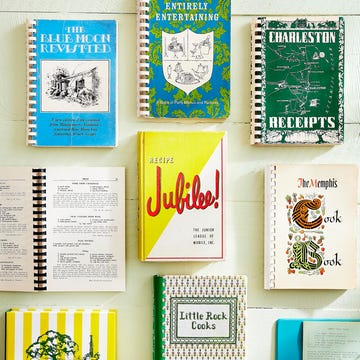11846: Centrifugal Railway, Manchester, England
 Bettmann//Getty Images
Bettmann//Getty ImagesLooping "roller coasters" have been in existence for longer than you'd expect; they were exhibited in the United Kingdom as early as 1843, and the first permanent "centrifugal railway" planted roots in La Havre, France shortly after. The problem with these rides is that the loops were too circular, which subjected riders to uncomfortable amounts of G-force.
21897: The Steeplechase, Brooklyn, New York
 Print Collector//Getty Images
Print Collector//Getty ImagesBrooklyn's Coney Island has been home to many iconic amusement parks over the years, and has been the site of numerous boundary-pushing rides. The Steeplechase, the centerpiece of Steeplechase Park, is just one example: It featured side-by-side, gravity-powered wooden horses that "raced" each other down a 1,000-foot-long track. While Steeplechase Park was demolished in 1966 (by Fred Trump!), the amusement park that's in operation on Coney Island now, Luna Park, features a Steeplechase-themed roller coaster as a nod to the area's history.
Advertisement - Continue Reading Below
31893: The Original Ferris Wheel, Columbian Exposition, Chicago, Illinois
 Bettmann//Getty Images
Bettmann//Getty ImagesAlso called the Chicago Wheel, this Ferris Wheel was the main attraction at the 1893 World' Fair. It reached a height of 264 feet, and was so solid that when tornado-force winds hit the wheel with their full might, the wheel was unharmed. After the Exhibition, the wheel was dismantled and shipped to St. Louis for the 1904 World's Fair.
41895: Flip-Flap Railway, Sea Lion Park, Brooklyn, New York
 Encyclopædia Britannica
Encyclopædia BritannicaAlso in the Coney Island area of Brooklyn, the Flip-Flap Railway was the first looping roller coaster in the United States. It also had a circular track, and actually gave some unlucky riders mild whiplash. But it could have been worse: Around the time the Flip-Flap Railway was decommissioned, the parks were testing a "Cannon Coaster," which had cars that were meant to jump a gap in the tracks. It was deemed unsafe during testing and never debuted for riders.
Advertisement - Continue Reading Below
51903: Loop the Loop, Luna Park, Brooklyn, New York
 Universal History Archive//Getty Images
Universal History Archive//Getty ImagesInstead of the Cannon Coaster, Luna Park came back with a Loop the Loop, which had a more ovular, more comfortable inversion for riders. Still, since you could fit so few riders on the track at a time, it was hard for ride operators to make a profit on this one.
RELATED: 40 Iconic Stores You Grew up With That Are No Longer in Business
61908: Flip-Flap Ride, Franco-British Exhibition, White City, London
 Heritage Images//Getty Images
Heritage Images//Getty ImagesLondon's Flip Flap was not a roller coaster — it was a viewing platform that could hold 50 people, then lift them 200 feet into the air. That gave them a view of the grounds of the Franco-British Exhibition, where it was housed.
Advertisement - Continue Reading Below
71908: Devil's Wheel, Oktoberfest, Munich, Germany
 Johannes Simon//Getty Images
Johannes Simon//Getty Images 81908: The Tickler, Chester Park, Cincinnati, Ohio
 Universal History Archive//Getty Images
Universal History Archive//Getty ImagesThe Tickler ride sends cards twisting and turning down a curved path. The sign hanging on the entrance fence for this one says it all: "Remodeled: Not as rough as last season."
Advertisement - Continue Reading Below
91910: The Human Pool Table, Steeplechase Park, Brooklyn, New York
 William Vandivert//Getty Images
William Vandivert//Getty ImagesSteeplechase Park's Pavilion of Fun had many swirling rides for those with strong stomachs. The Human Roulette Wheel operated much like a Devil's Wheel, while the Human Pool Table (pictured here) challenged visitors to slide from one end of the room to another without getting thrown around by spinning platforms on the floor.
RELATED: Here's What School Looked Like the Year You Were Born
101920: Wonder Wheel, Coney Island, New York
 Lambert//Getty Images
Lambert//Getty ImagesConey Island's famed Wonder Wheel is celebrating its 100th anniversary in 2020. While it's not the oldest ferris wheel still in operation today — that's the Weiner Riesenrad in Vienna, Austria — the Wonder Wheel distinguishes itself by having an inner ring of cars that roll back and forth as the wheel revolves.
Advertisement - Continue Reading Below
111923: Bumper Cars, Glen Echo Park, Glen Echo, Maryland
 Universal History Archive//Getty Images
Universal History Archive//Getty ImagesBumper cars are an amusement-park staple, but take a look at how far they've come. These bumper cars at Glen Echo Park look un-padded, un-protected, and very, very full. Makes you feel like today's dodgems are a little too cushy (although they probably go much faster).
121927: Racer, Kennywood, West Mifflin, Pennsylvania
 Kennywood
KennywoodKennywood's historic Racer does a neat trick: Two trains start off at the same time, and, when they return, they've switched platform sides (without somehow colliding mid-course, and staying neck-and-neck throughout). How? The trains are actually on one, continuous track — called a möbius loop roller coaster — and it's the only one in the United States still in use today.
Advertisement - Continue Reading Below
131927: Derby Racer, Playland, Rye, New York
 Courtesy of the Westchester County Archives
Courtesy of the Westchester County ArchivesSimilar to the Steeplechase, the Derby Racer at Playland in Rye, New York lets riders feel like they're really in a horse race. The horses whip around in a circle at a speed of 25 mph, and, to compensate for the centrifugal force, riders actually have to put all their weight on one foot to keep from being thrown off. The Derby Racer was damaged in a fire in 2017, but plans are in the works to refurbish and reopen the attraction.
141930s: Auto Race, Kennywood, West Mifflin, Pennsylvania
 Kennywood
KennywoodKids can get a taste of what it's like to hit the road at the Auto Race ride, which puts riders in the driver's seat and lets them go. While this type of ride was popular in the 1930s, Kennywood has the only surviving one today.
Advertisement - Continue Reading Below
151930s: Auto Race, Kennywood, West Mifflin, Pennsylvania
 Kennywood
KennywoodOriginally, the Auto Race cars were modeled to look like Packards. In the '40s, hills were removed from the tracks because, on drizzly days, the cars couldn't always make it over the hills. The windshields and headlights were also removed from the cars early on, which gives them a sportier look.
161930: Helter Skelter, Gorky Central Park of Culture and Leisure, Moscow, Russia
 ullstein bild Dtl.//Getty Images
ullstein bild Dtl.//Getty ImagesIf you couldn't' already glean it from the Beatles song, a helter skelter is a type of twisty slide that typically winds its way around a tower, and they've been in use at fairs since the early 1900s. But this on in Moscow's Gorky Park, designed to look like the Tower of Babel, features an extra-tall tower, which makes for many twists and turns.
Advertisement - Continue Reading Below
171930s: Loop-O-Plane, Kennywood, West Mifflin, Pennsylvania
 Kennywood/Heinz History Center
Kennywood/Heinz History CenterCalled "The Salt and Pepper Shakers" by those in the know, the Loop-O-Plane is just what it sounds like: Mechanical arms take riders, over and over, in a stomach flip-flopping, upside-down-turning loop. This ride was eventually removed to make way for more modern iterations.
181941: Parachute Jump, Coney Island, New York
 Bettmann//Getty Images
Bettmann//Getty ImagesOriginally built for the 1939 World's Fair, the Parachute Jump eventually made its way to Steeplechase Park in 1941. Riders were strapped into a chair, lifted by cables high into the air (the tower is 200 feet tall), then dropped. Though the parachute and cables slowed riders down, the descent was still a fast one (15 seconds or so), it was more akin to free-fall.
Advertisement - Continue Reading Below
191941: Parachute Jump, Coney Island, New York
 Bettmann//Getty Images
Bettmann//Getty ImagesIf you could stomach the heights and the speed, the attraction gave riders a great view of the beach and park. Though the parachutes are no longer in operation, the Parachute Jump tower is a designated landmark.
201949: The Looper, Rockaways' Playland, Rockaway Beach, New York
 New York Daily News Archive//Getty Images
New York Daily News Archive//Getty ImagesThis ride may look like a guaranteed stomachache, but riders were actually in control of how many loops they did, so the level of thrill was up to them. This version of the Looper is from Rockways' Playland, which closed in 1987, but you can still find one in operation at Knoebels in Elysburg, PA.

Marisa (she/her) has covered all things parenting, from the postpartum period through the empty nest, for Good Housekeeping since 2018; previously, she wrote about parents and families at Parents and Working Mother. She lives with her toy-collecting husband and daughter in Brooklyn, where she can be found helping out her team at bar trivia or posting about movies on Twitter and Bluesky.
Advertisement - Continue Reading Below
Advertisement - Continue Reading Below
Advertisement - Continue Reading Below


































